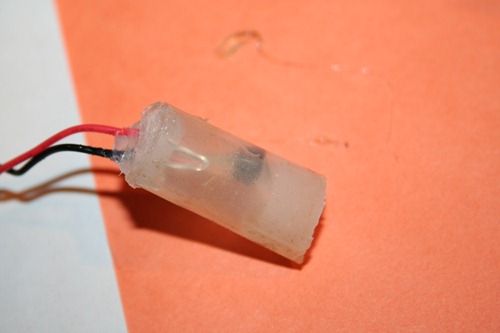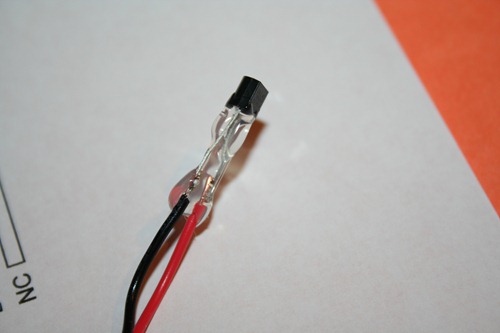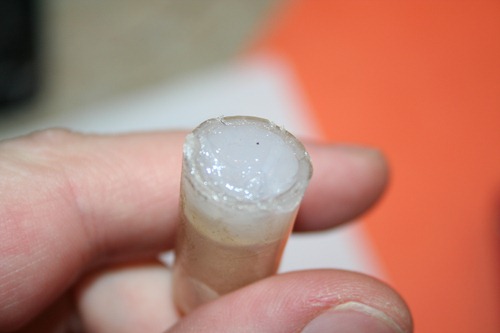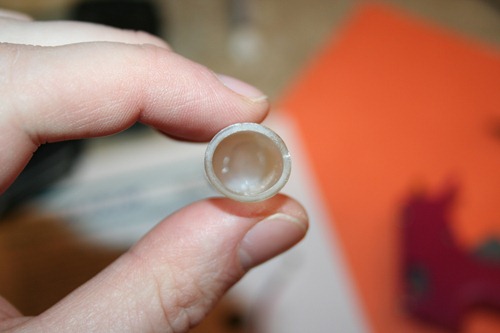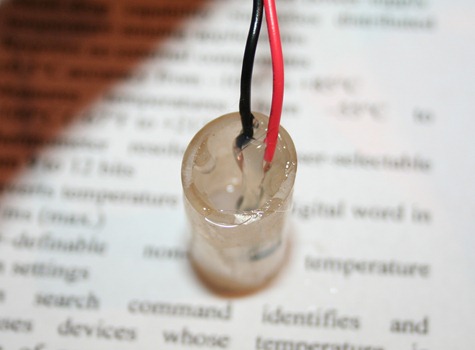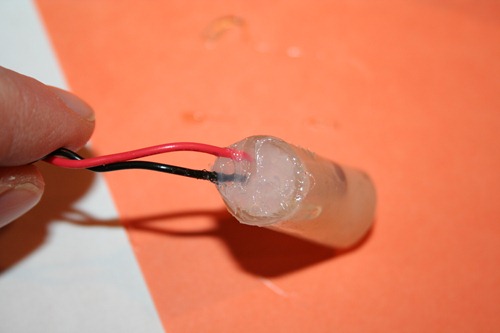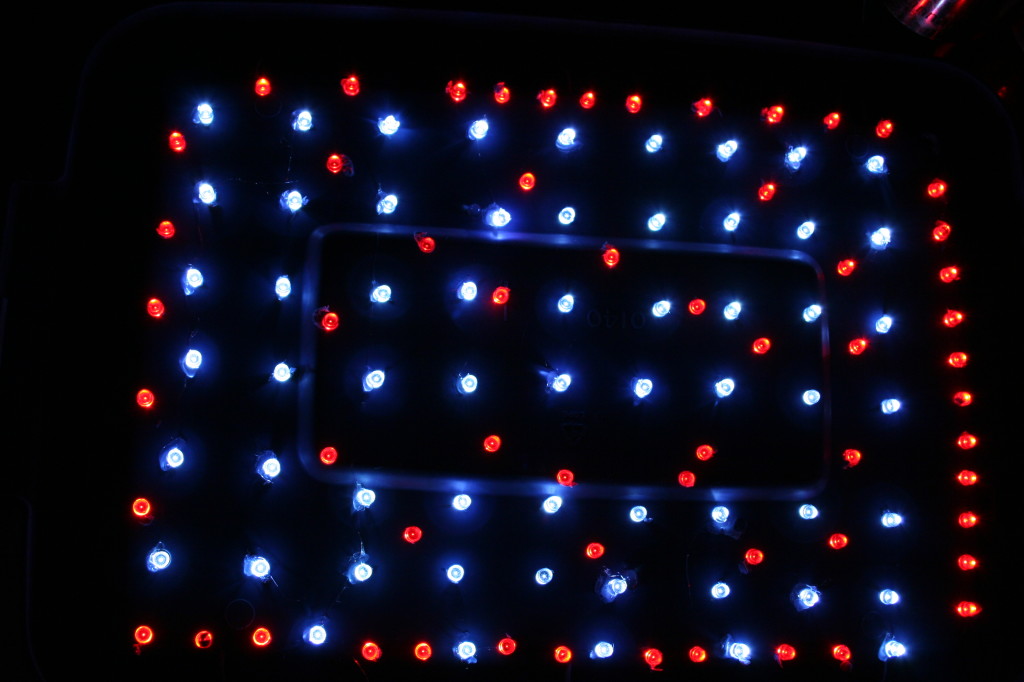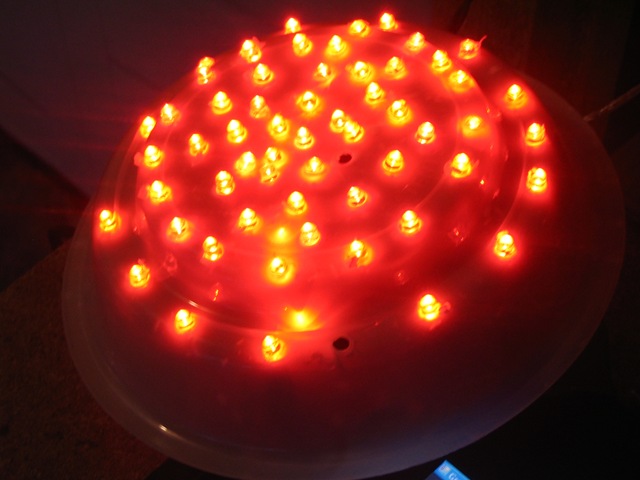Planning garden using GrowVeg (Year #2)
14.3 years ago garden planning, spring, sprouting
Though GrowVeg worked great for planning my garden last year, this year it became even more useful. By creating a garden plan using my template from my previous year not only did it save time but also showed where I should not plant certain vegetables because I planted the same family of plants in that area last year. Here is my plan for my larger plot:
I am growing much of the same as I have in past years with the addition of broccoli and Swiss chard.
For my longer fence plot here is what I am going with the following:
New in this area I am going to plan on growing some dry beans for storage as well as some green beans along with our regular cucumbers, tomatoes, and sunflowers.
I also have an area I am planning on growing herbs, though for that I am just going to wing it.
In the end it took me about 3-4 minutes to create this plan thanks to GrowVeg which I can print out and keep by the garden so I don’t have to wonder, “Now where did I plant that spinach again.”
They do have a free 30 day trial if you want to try it out this year.
Tags: cheap, herb garden, outdoor plants, tomato plants, vegetables
Homemade waterproof digital thermometer
14.4 years ago arduino, electronics, thermometer, Uncategorized, waterproof
Now I am playing with hydroponics in my grow box I want to monitor the temperature of my nutrient tank. This is important too hot it can bread disease too cold it can shock your plants. I also want to use the data to identify how ebb/flow cycles affect ambient and solution temperature (for my own nerd curiosity)
I have been thoroughly impressed with the Dallas DS18S20 temperature sensor so decided this would be a great component to use for this project and this is how you can make your own.
Materials:
- DS18S20 temperature sensor
- 1/2 inch plastic tubing (could go smaller but had some lying around)
- Aquarium/food grade silicone
- 18 gauge solid core wire (long enough to get from arduino to what you want to measure)
- Glue gun with glue
- Soldering iron with solder
Construction
Step 1: Solder the two wires to pins 1 and 2 of the DS18S20 and apply a little dab of hot glue to all of the exposed metal. This is not entirely necessary but a small safety precaution so you don’t discover you shorted the connection during assembly.
Step 2: Cut approximately 1 inch length of plastic tubing using a utility knife
Step 3: Apply liberal amount of silicone to one end of the tubing cut in step 2.
Step 4: Allow silicone to set for 15 minutes and do a visual inspection for leaks. You may also try blowing very gently into the tube to check for leaks, though not too hard to create a hole in the process.
Step 5: Attach the DS18S20 to the tube using a drop of hot glue. This is not entirely necessary but when trying to get a perfect watertight seal the less moving parts the better.
Step 6: Again apply a liberal amount of silicone to seal the top paying special attention to the area around the wires
Step 7: Give the silicone at least 24 hours to completely set.
Step 8: Testing. First off the sensor may be buoyant, if this is the case carefully attach a 1/2 hose clamp or something else to help tether it down. Next suspend in a glass of water (preferably clear) and watch for a few minutes for leaks and or bubbles. If you see bubbles try to get an much water as you can out and apply a more silicone and let set for another 24 hours
Hooking it up
This part is pretty straightforward. Pin 1 is your ground and pin 2 is your DQ which for most people doesn’t make much sense but it is a combination power source and bus output. To get this to work you hook up your ground (black wire) to your ground on your arduino and the red wire to digital in and 5v with 4.7K resistor between. Sure that is very confusing so hopefully the breadboard visual below is much more helpful.
Writing the Code
Since I am planning on using this with my grow box controller, I will show how to use this with arduino to get some numbers. You could look at my arduino code in the grow box controller post to get the values but in my case I need to get values from two DS18S20 temperature sensors so I found a great OneWire library which helps make your arduino code very simply. Simple extract the two folders in the zip archive to [ArduinoPath]\hardware\libraries and enter the following code into the arduino UI:
#include <OneWire.h> #include <DallasTemperature.h> OneWire oneWire(8); // on pin 8 DallasTemperature sensors(&oneWire); void setup() { Serial.begin(9600); // Initialize sensors sensors.begin(); } void loop() { sensors.requestTemperatures(); Serial.print(“Sensor #0: “); Serial.println(sensors.getTempCByIndex(0)); Serial.print(“Sensor #1: “); Serial.println(sensors.getTempCByIndex(1)) delay(100); // wait a little time }
If all goes well you should see output similar to the following (values in Celsius):
Sensor #0: 20.3 Sensor #1: 30.4 Sensor #0: 20.3 Sensor #1: 30.4 Sensor #0: 20.3 Sensor #1: 30.4
For people like me who are used to Fahrenheit you can simply use the following equation to convert Celsius to Fahrenheit:
°F = °C x 9/5 + 32
Though I am using this for my grow box controller there are many other uses you could use this for:
- Aquarium temperature monitoring
- Brewing temperature monitoring
- Weather station
- Soil thermometer
Tags: arduino, cheap, growbox, outdoor plants, vegetables
pH needs of plants in soil or hydroponics
14.4 years ago hydroponics, pH, water
With the exception of some of my acid loving plants and flowers I normally do not have to worry much about the pH of my soil. This is because I have amended my gardens with nutrient rich soils in raised beds over my alkaline clay I get naturally in my area. This and the fact that due to natural and manmade causes the rainfall is slightly acidic and given the average range for the sweet spot of most edible vegetables (see table below) is 5.8 to 6.0 having your soil slightly acidic this is perfect.
Now when it comes to hydroponics this is entirely different. My tap water has a pH of around 7.5 and the fluctuation of plant using nutrients and transpiration can cause great havoc on the pH on your hydroponic system. Now this creates a challenge but also an opportunity to have control with great precision your pH and keep your plants growing in the sweet spot for the healthiest plants and the greatest yields.
So whether you are growing hydroponically, or simply trying to figure out why your Fennel didn’t do so well last year take a look at the table below, hopefully for some hints of what happened.
Recommended pH Ranges of Vegetables/Herbs
| Plant | Low | High | Plant | Low | High | |
| Artichoke | 6.5 | 7.5 | Millet | 6.0 | 6.5 | |
| Asparagus | 6.0 | 8.0 | Mint | 7.0 | 8.0 | |
| Average | 6.3 | 7.8 | Mushroom | 6.5 | 7.5 | |
| Basil | 5.5 | 6.5 | Mustard | 6.0 | 7.5 | |
| Bean | 6.0 | 7.5 | Okra | 5.5 | 6.0 | |
| Beanroot | 6.0 | 7.5 | Olive | 5.5 | 6.5 | |
| Beet | 6.0 | 6.8 | Onion | 5.5 | 6.5 | |
| Broccoli | 6.0 | 6.8 | Paprika | 7.0 | 8.5 | |
| Brussel Sprouts | 6.0 | 6.8 | Parsley | 5.0 | 7.0 | |
| Cabbage | 6.0 | 6.8 | Parsnip | 6.0 | 6.8 | |
| Calabrese | 6.5 | 7.5 | Pea | 5.8 | 7.0 | |
| Carrot | 6.0 | 6.8 | Peanut | 5.0 | 6.5 | |
| Cauliflower | 6.0 | 6.8 | Pepper | 5.5 | 6.0 | |
| Celery | 6.0 | 6.5 | Peppermint | 6.0 | 7.5 | |
| Chicory | 5.0 | 6.5 | Pistacio | 5.0 | 6.0 | |
| Chinese Cabbage | 6.0 | 7.5 | Potato | 4.5 | 6.5 | |
| Chives | 6.0 | 7.0 | Potato, Sweet | 4.5 | 6.0 | |
| Corn Salad | 6.0 | 6.5 | Pumpkin | 6.0 | 6.8 | |
| Corn, Sweet | 5.8 | 6.8 | Radish | 6.0 | 6.8 | |
| Courgettes | 5.5 | 7.0 | Rice | 5.0 | 6.5 | |
| Cress | 6.0 | 7.0 | Rosemary | 5.0 | 6.0 | |
| Cucumber | 6.0 | 6.8 | Rutabaga | 6.0 | 6.8 | |
| Eggplant | 5.5 | 6.0 | Sage | 5.5 | 6.5 | |
| Fennel | 5.0 | 6.0 | Shallot | 5.5 | 7.0 | |
| Garlic | 5.5 | 7.5 | Sorghum | 5.5 | 7.5 | |
| Ginger | 6.0 | 8.0 | Soybean | 5.5 | 6.5 | |
| Horseradish | 6.0 | 7.0 | Spearmint | 5.5 | 7.5 | |
| Kale | 6.0 | 7.5 | Spinach | 6.0 | 6.5 | |
| Kohlrabi | 6.0 | 6.8 | Squash | 6.0 | 6.8 | |
| Leek | 6.0 | 8.0 | Swede | 5.5 | 7.0 | |
| Lentil | 5.5 | 7.0 | Swiss Chard | 6.0 | 6.5 | |
| Lettuce | 6.0 | 6.5 | Thyme | 5.5 | 7.0 | |
| Marjoram | 6.0 | 7.5 | Tomato | 6.0 | 6.5 | |
| Marrow | 6.0 | 7.5 | Turnip | 6.0 | 6.8 | |
| Melon | 6.0 | 6.8 | Upland Cress | 6.0 | 6.5 |
Tags: garlic bulbs, herb garden, outdoor plants, pepper plants, peppermint plant, tomato plants, vegetables
Cheap Hydroponic Bean sprouter
14.4 years ago cheap, ebb and flow, hydroponics
Maybe not the most hygienic solution but definitely cheap, innovative, and low maintenance. I’ll stick to my ebb and flow design, but thought I would share for those feeling adventurous.
Tags: cheap, outdoor plants, vegetables
Simple and cheap homemade ebb and flow hydroponics system
14.4 years ago cheap, ebb and flow, hydroponics
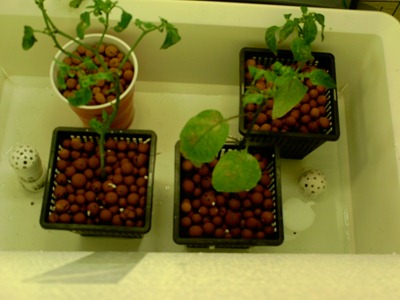
Though not my first hydroponic system this is is definitely a little more complicated than my last attempt of an fogger system created last year. This time I decided to go with an Ebb and Flow system, where the concept it pretty simple, flood the planting area with water nutrients and let it drain, wait a defined amount of time and then repeat. For this build I had a few requirements:
- Must be inexpensive: Hey this is the cheap vegetable gardener site
- Must be small: I have a limited space to grow and nutrients can be expensive and given what I am growing is legal don’t really need $20 basil
- Must be safe from flooding: Though this is running in my garage, I really don’t want to come in with 10/20 gallons of water/nutrients on my floor.
- Could be adapted for alternate hydroponic system.
Given these requirements, this is what I came up with and how I built it:
Materials
- 18 gallon opaque Rubbermaid container (happened to have one of these around
- 5 gallon basin — SLUGIS box from Ikea ($5.99)
- vinyl tape (plumbers tape)
- 1 inch hole saw
- 1 inch threaded (diameter) to 3/4 PVC adapter
- 3/4 inch threaded (diameter) to 1/2 in hose adapter
- 2 3/4 inch PVC caps
- Cheap pond/fountain pump (100 GPH)
- 1 foot of 1/2 inch plastic tubing
- 2 foot 3/4 inch PVC pipe (only need couple inches but smallest length I could buy)
- aquarium/food grade silicon (optional I used this to ensure very watertight seal but found not necessary)
Construction
Take the 5 gallon basin and drill two 1 inch holes in the middle of each side. One whole should be drilled from the top and the other should be drilled from the bottom.�
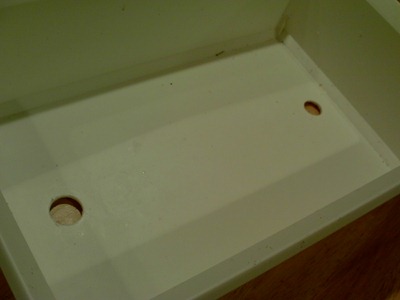
Take both threaded adapters and apply liberal amount of vinyl tape.
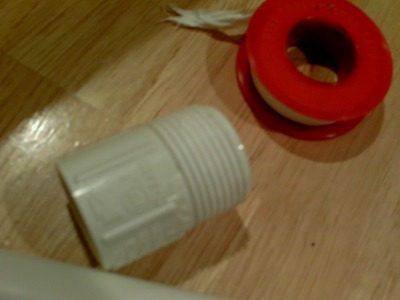
Screw in the 1/2 inch hose adapter from the bottom with just barely enough clearance to pop through. When the pump stops the water will drain through this same hole.
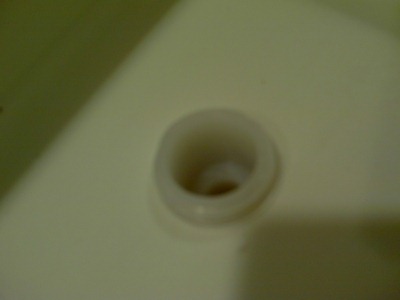
For the overflow pipe, screw in the 3/4 inch PVC adapter in from the top until hand tight.
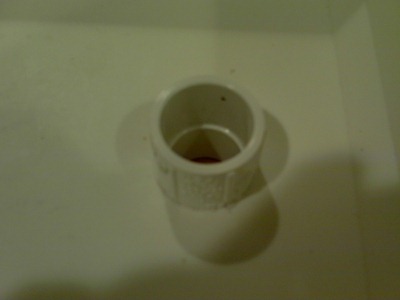
Take both caps and drill in a bunch of holes slightly smaller than your media. The basic idea is you don’t want some Hydroton clay balls falling into your pump or reservoir.
Cut about 2 inches of 3/4 PVC pipe and attach to overflow and top with PVC cap with dozen or so holes in it.

Lastly attach the 1/2 plastic tube to your pump and place everything on top of your 18 gallon Rubbermaid tub (which fits perfectly and is very sturdy) Fill with water nutrients and hook up your water pump to a 24 hour timer (or grow box controller)
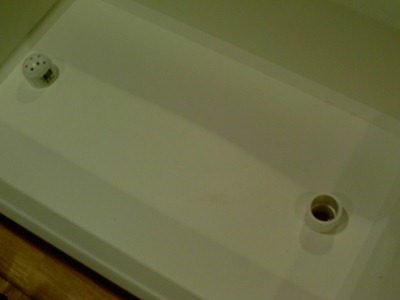

Here is the Ebb & Flow system in action, as you can see very simple but very cheap and versatile.
Tags: cheap, growbox, led, outdoor plants, vegetables
LED/Christmas light projects
Just a friendly reminder to pick up some discounted LED or non-LED Christmas lights for some of my previous projects
Christmas LED Grow Box
Basically take a old Rubbermaid container and drill some holes and insert lights and you have your own Christmas light LED grow box. This worked great last year to hold my seedlings until they were ready to move into the bigger grow box in the garage. Here are some posts on construction and updates:
Cheap LED Light and Grow Box
Christmas light LED grow box – Update #1
Christmas light LED grow box – Update #2
Supplemental Christmas LED Light
Similar idea to the LED grow box, though used in addition to your normal grow lights for a little additional red wavelength light, see posts below for complete construction directions:
Make your own supplemental LED grow light
Heating row tunnels (or grow box) with non-LED lights
Replacing your old Christmas lights with LEDs to save on your electricity bill? You can use your old regular old Christmas lights to heat your row tunnels to increase the temperature by about 10 degrees to help get your plants out a ahead of schedule. I have been using some of mine in my grow box to help during some of our colder nights this winter.
Heating row tunnels and grow box with Christmas lights
Tags: cheap, garden seeds, grow lights, growbox, led, outdoor plants, vegetables


